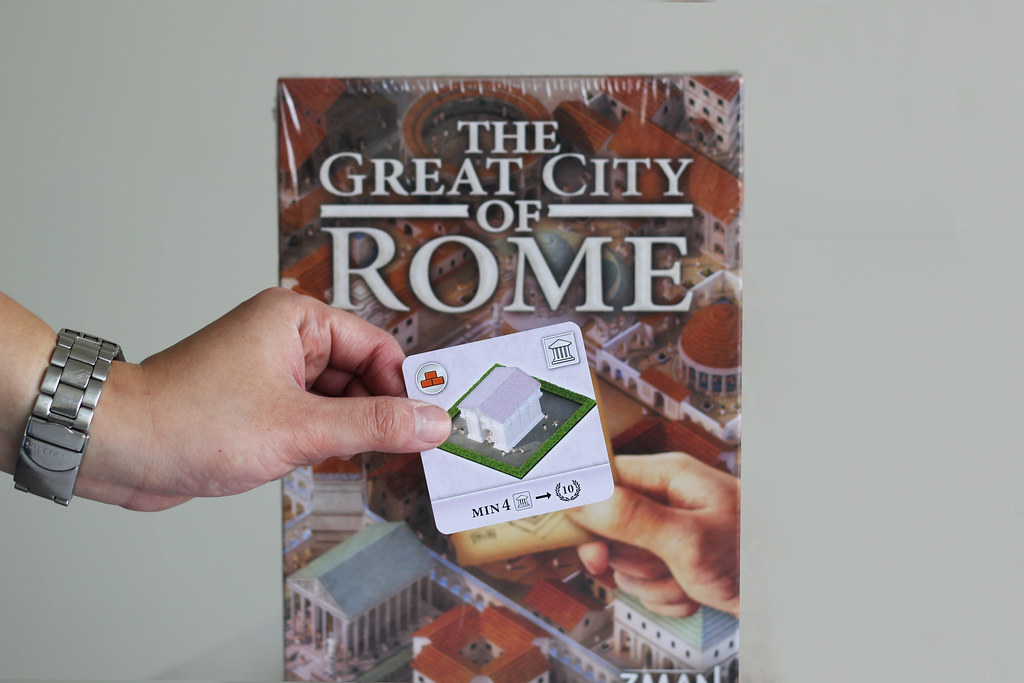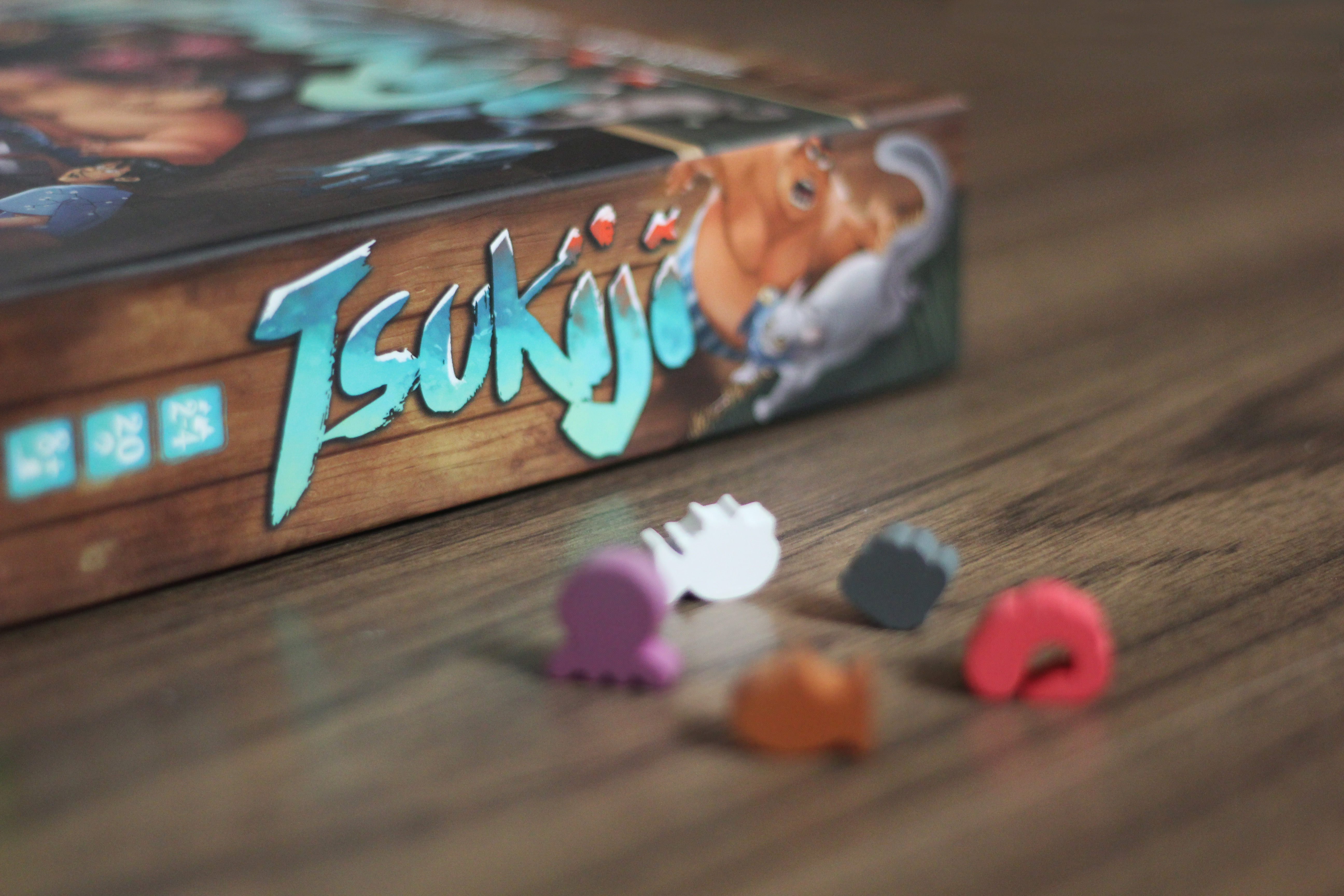The Great City of Rome was not built in a day, or in this case a round, so to speak. With the game lasts for 14 rounds, I guess it is true that great things take time to realize. This game from ABACUSSPIELE and Z-Man Games has been around since SPIEL 2018. I got mine for free from their booth, actually. But worry not, I will still write my honest opinion here. It is the German version, but I think there will be no actual difference besides the written rulebook.
A short disclaimer before you read my board game analysis
As an avid euro gamer and hardcore Legend of the Five Rings (L5R) LCG player, my reviews may reflect a preference for these styles, and I may not cover solo games/variants extensively. Please note that my personal remarks are based on my gaming experiences, and I aim to provide honest insights within the scope of my preferences.
I think many designers and publishers have tried to romanticize the Roman Empire many times. Perhaps the persona of the First Reich is deemed to be the best shot for this segment. Some enjoyed success, but many have failed miserably, too. To which group does this game belong then? There are many videos explaining the rules and showing the gameplay in YouTube. One of my favourite is, of course, from Jon Gets Games. Check it out below.
MY GREAT CITY OF ROME’S FIRST IMPRESSION
The language independence is one of the reason why I was convinced to have this game in my arsenal. The huge printed word ROME on the cover has attracted me like a moth drawn to flame. This capital city of Italy (and the former Holy Roman Empire) has been in my list of top cities in Europe you must visit. It is personal, but I think most of you who have visited Romus and Regulus would agree. With the goal to be the best architect and to please Caesar through planning and building structures, I expected to see many great illustrations of the grand design of this archaic civilization. Would I see them in this game, though?
The components in the Great City of Rome are the modest ones. No wonder, this game does not glorify the need of miniatures if they are unnecessary. Despite the lack of flashy parts, the game is still eye-catching, thanks to its simplicity. Most of them are cards, but we found some tokens here, too. The main boards are just some strips, but it has adequate space to show the icons needed to play the game. The similar iconography is printed on the cards as well. With the design approaching the language independent market, it is understandable to use symbols to convey everything.
PERSONAL FINAL OPINION FOR THE GREAT CITY OF ROME

Overall, the Great City of Rome is a decent game. There were two major decision-making aspects during our session, and one of them was quite multi-layered. The drafting for the resources, in this case, did not only determine what kind of resources we gathered during that one round, but also the turn order to then draft the tile. It brought out the dilemma where we had to choose between having less resource to pick the first options and having more that may not be well-spent to erect a building we didn’t really need in our city grid.
The next aspect to decide is the tile placement. Just like other tile-laying games out there, this is an essential part to maximize the points we can get during the game. Some buildings have special abilities that can be triggered by spending cogs.
Thanks to the always-changing player order, the Great City of Rome becomes more dynamic and flowing. Nevertheless, I still feel that this game can be better. Although this aspect brings out something new every round, the game flow feels a bit too repetitive. Maybe because we only faced a pair of things we need to decide, just like what I wrote above.
The artwork could have been more extravagant
I read some reviews (after playing the game and write most of my thoughts here, of course, to prevent bias) and they took the austerity as dull and boring, which I can quite understand. The cover of the Great City of Rome looks far more lively than the cards. I found the drawings on them to look lifeless and unremarkable, and it was quite disappointing. At this point, I prefer the buildings to be depicted with sketches (just like on the box there) to the colourful ones we have. And maybe, it could have added an educational value if they labelled the buildings’ names.

This botch would never taint Martin Hoffmann’s and Claus Stephan’s reputation, though. Both has been rather successful with their commissions in other games. I will never forget their work for Race for the Galaxy and Russian Railroads, for example. Nevertheless, the game itself does not necessarily become bad. The Great City of Rome has something else to offer even when the artwork is not into my liking.
The Emperor meeple that does nothing
It was a bit puzzling when we saw this golden meeple inside the box. It turns out, this shiny thing was supposed to be the Emperor of Rome.
During the setup, we found out that it was a stationary marker that stood on the exact spot (beside the resource stripes) for the rest of the game. It did not move a bit and did not contribute to the glory of Rome.
FINAL THOUGHTS
While the Great City of Rome is playable, I think it would have a very narrow audience group. The game itself is not bad, but as a decent tile-laying game, it does not give any competition to other games in the same genre. One must be great at worst and excellent at best to stand out in the fierce board gaming world. It is a nice game, but it may not meet my table that much.
I am a full-time food technologist during weekdays. However, when the calendar hits weekends, I transform into an avid board gamer. I am a hardcore Legend of the Five Rings (L5R) LCG player from Fantasy Flight Games (FFG). Current hobby: buying board games. My shelf of shame’s list is getting longer, thanks to you, Kickstarter.









